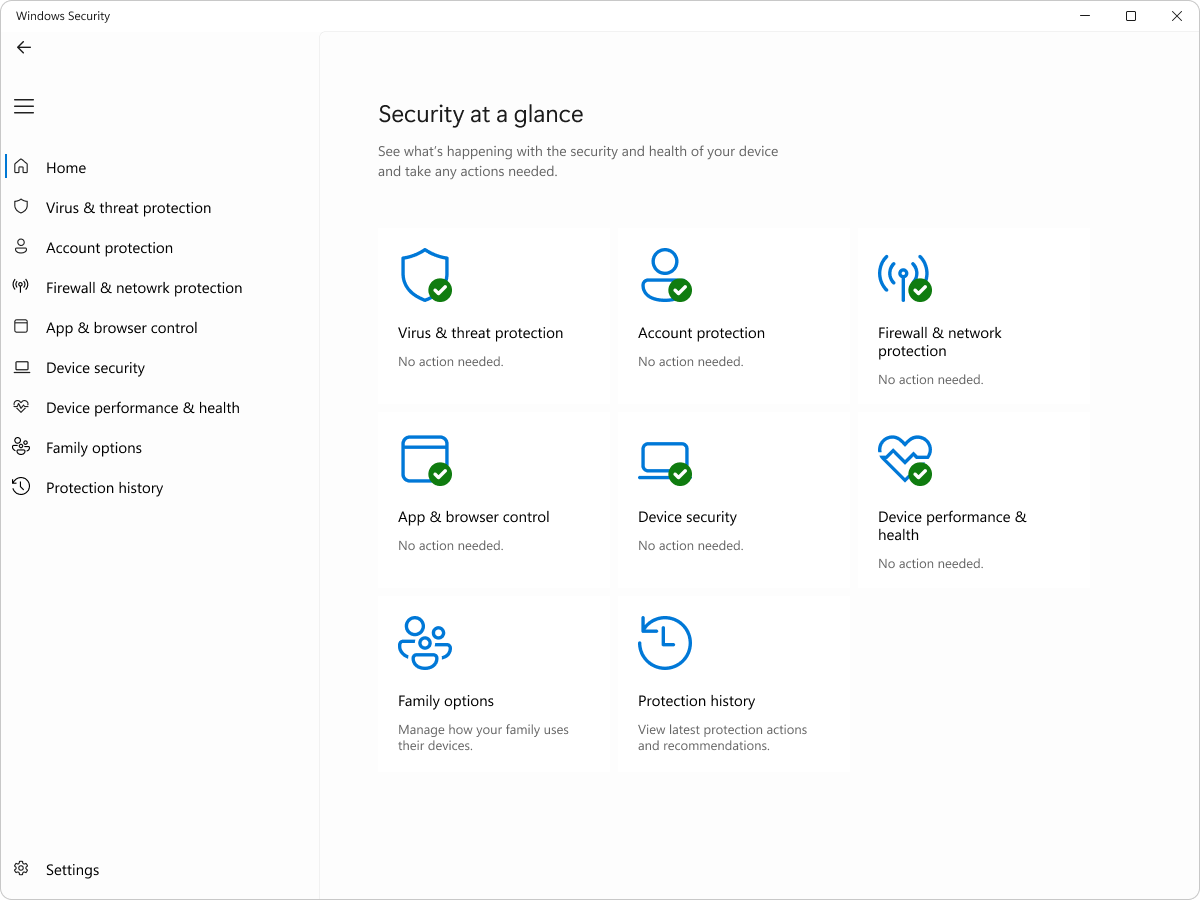Stay Protected With the Windows Security App
Applies To
The Windows Security app is a comprehensive security solution integrated into Windows, designed to protect your device and data from various threats. It includes features such as Microsoft Defender Antivirus, Windows Firewall, and Smart App Control, which work together to provide real-time protection against viruses, malware, and other security threats. The app is built into Windows, ensuring that your device is protected from the moment you start it up.
Tip: If you're a Microsoft 365 Family or Personal subscriber you get Microsoft Defender, our advanced security software for Windows, Mac, iOS, and Android, as part of your subscription. Learn more at Getting started with Microsoft Defender.
One of the key benefits of the Windows Security app is its ability to provide real-time protection. Microsoft Defender Antivirus continuously scans your device for potential threats and takes immediate action to neutralize them. This proactive approach helps to prevent malware infections and keeps your device running smoothly. Additionally, the firewall feature monitors incoming and outgoing network traffic, blocking any suspicious activity to safeguard your data and privacy.
To open the Windows Security app , search for it in the Start menu, or use the following shortcut:
Common tasks
Here's a brief list of common tasks that you can carry out from the Windows Security app. Expand each section to learn more:
If you're worried about a specific file or folder on your local device, you can right-click the file or folder in File Explorer, then select Scan with Microsoft Defender.
Tip: On Windows 11 you may have to select Show more options after you right-click to see the option to scan the file or folder.
If you suspect there's malware or a virus on your device, you should immediately run a quick scan.
In the Windows Security app on your PC, select Virus & threat protection > Quick scan or use the following shortcut:
If the scan doesn't find any issues, but you're still concerned, you may want to check your device more thoroughly.
Sometimes you might need to briefly stop running real-time protection. While real-time protection is off, files you open or download won't be scanned for threats. However, real-time protection will soon turn on automatically again to protect your device.
In the Windows Security app on your PC, select Virus & threat protection > Manage settings or use the following shortcut:
Virus & threat protection settings
You can turn Real-time protection On or Off using the toggle button.
To learn more about the Windows Security app and all its features, see Windows Security App Overview.











